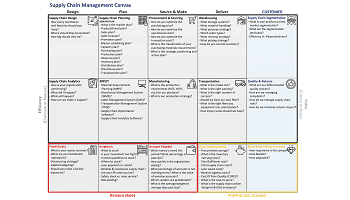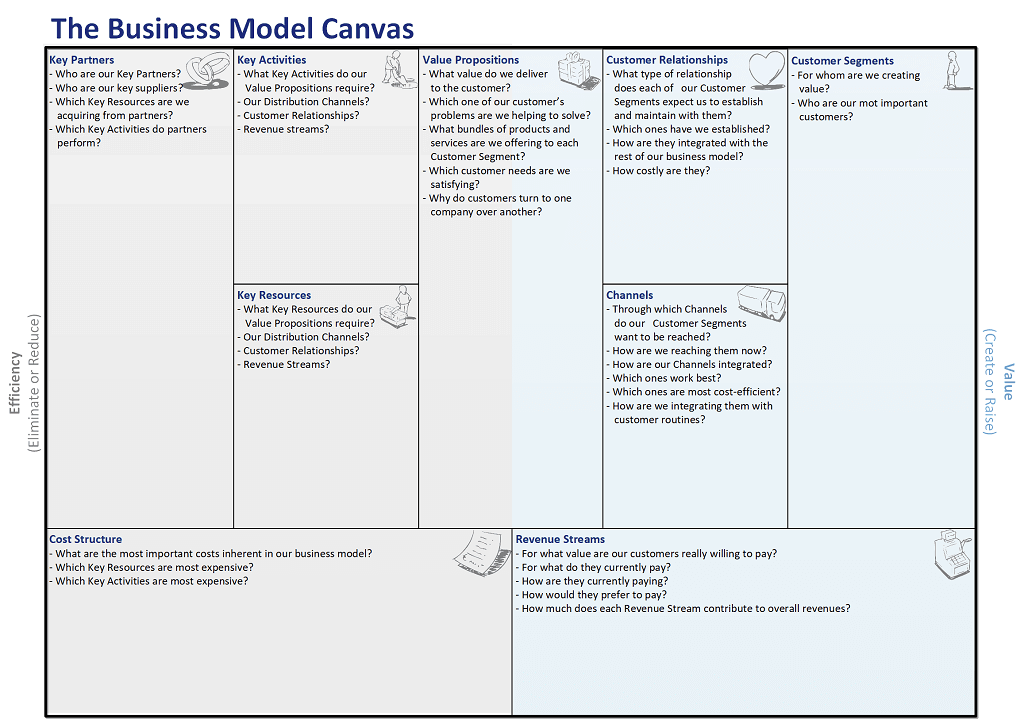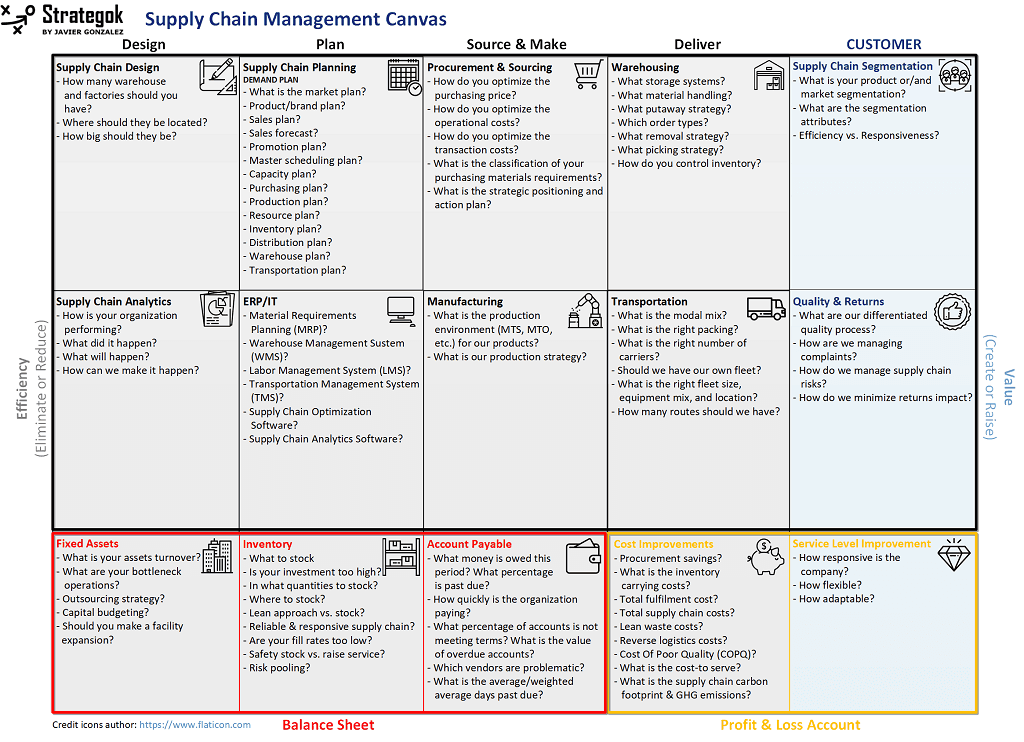- June 22, 2018
- Posted by: Javier González Montané
- Categories: Strategy, Supply Chain

The Business Model Canvas is a great contribution to reduce the complexity of designing successful business models. Implementing the Supply Chain Management Canvas can contribute to simplifying the process to build Supply Chain models that create a competitive advantage for our companies.
The benefits of a canvas approach
Based on the official site of the Business Model Canvas, we can point out four main objectives for the canvas approach:
- Describe our business model in a limited and manageable quantity of basic building boxes, which allow us to maintain focus on the key functions/activities/processes/resources.
- Define a logic pre-structure of the canvas. This is essential because business or supply chain models depend heavily on the alignment and tradeoffs between those basic building boxes. Usually, the canvas framework is used for a strategic purpose. It is important to realize that strategy is about “choices,” so the choices are what will make our model unique. Some examples of supply chain choices are make-to-stock vs. make-to-order, efficiency vs. responsiveness, centralized vs. decentralized stocks, etc.
- Help to describe, map, design, discuss, challenge, choose, improve, innovate… This visual chart allows us to better visualize the “As Is” and “As Should Be” scenarios. Moreover, it is a great visual communication tool to discuss new ideas and align different teams/people.
- Make the focus on the Key important things. The one-page “limitation” helps to maintain focus and avoid getting lost in many building boxes and initiatives.
Having the Business Model Canvas is a prerequisite
Even if your objective is the Supply Chain Canvas, be aware that we need the input of the Business Model Canvas before. The Supply Chain Canvas must be driven by the company strategy and business model. Thus, using the Business Model Canvas as an input for the Supply Chain Canvas is the only way to guarantee the necessary alignment between the firm’s business model and the supply chain model.

Furthermore, I would suggest creating a supply chain complementary version from the CEO Business Model Canvas. That complementary version should be focused on the Supply Chain function in order to move from the company scope to more specific Supply Chain details. For instance, in that complementary version we are using key supply chain partners rather than the company partners, or key supply chain activities rather than the company activities, or the supply chain value proposition rather than the company one, and so on.
The Supply Chain Canvas
Once that we have the Business Model canvas from the CEO, and we have performed a complementary version focused on the supply chain function, we are ready for the more specific and customized Supply Chain Canvas.
My proposal for the Supply Chain Canvas is fifteen building boxes. This number is a consequence of the complexity of the supply chain function, and likely the maximum number of building boxes that we should have in the canvas tool. The operations of the model are placed on the top ten building blocks which follow the sequence of the value chain (design, plan, source & make, deliver, and customer.) The bottom five building boxes are focused on the supply chain financial impact in the Balance Sheet and the Profit & Loss Account. Finally, the light gray background building blocks are more focused on efficiencies, and the light blue more focused on customer value creation.

This one-page framework will support supply chain departments to identify and deliver higher operational and financial performance. However, the success of the implementation of the tool will likely depend on “the mind of the supply chain strategist.” I mean the supply chain team skill to identify the very few most critical issues, frame the questions properly, and make the right supply chain choices to uncover the full potential of their supply chain.

